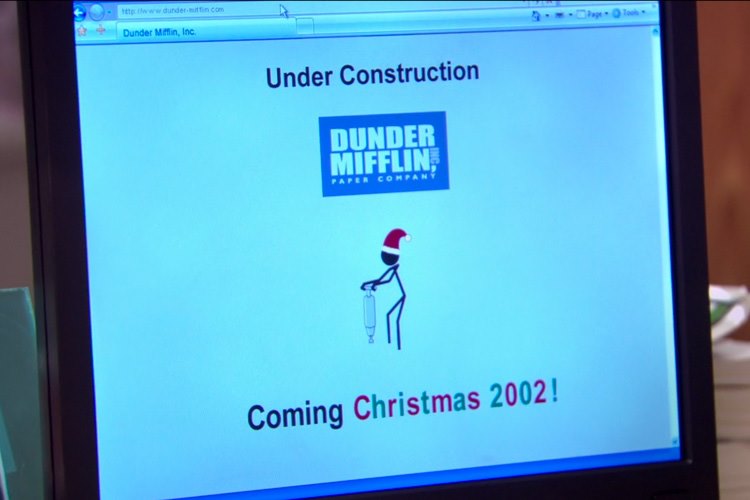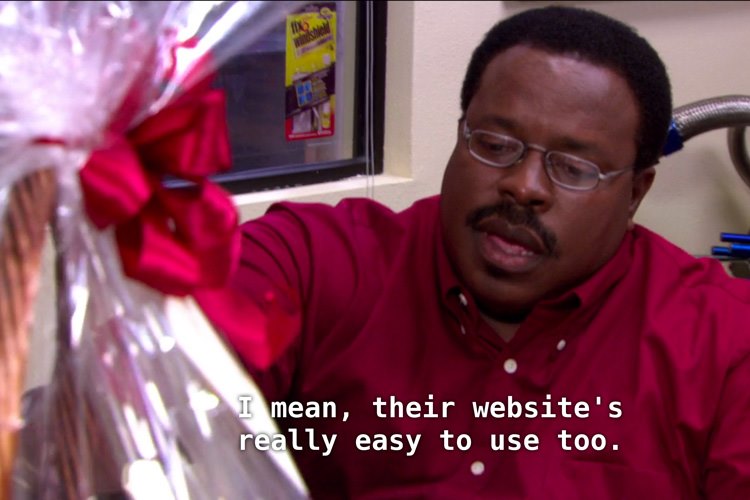Lessons on Web Design from Dunder Mifflin Infinity

In the fourth season of the American version of The Office, there’s a running subplot involving the character of Ryan Howard, recently promoted from temp worker to full-time salesman to VP of the company, attempting to create a cutting-edge website for the fictional Dunder Mifflin Paper Company. Ryan feels like his company is falling behinds the times and not utilizing all of the new tools at their disposal. His former boss (and now underling), Michael Scott, rebels against the idea that his team of salesmen can be replaced with this shiny new tool, and believes that the old-school sales methods are best, and what their customers value most.
Obviously, The Office is satire. Michael tries to prove his point by delivering gift baskets to former customers and ends up driving his car into a lake to prove that his GPS is fallible new technology, while Ryan ends up arrested after creating a site that tries to do too much and fudging sales numbers to back himself up. It’s an over-the-top narrative with comically flawed characters taking comically polarized positions pro- and anti-technological innovation. But the argument at the core of the arc is one that many very real businesses struggle with: if you’re an established company with a successful ground-level sales team, won’t adding or modernizing a site undercut existing relationships with your clients? Is newer always better, technologically?
The answer falls somewhere in the middle, in my experience. A well-designed site should function as a tool first and foremost. If your sales tools are actively working against your sales team, they are not doing their job. The Office shows us top salesman Dwight pitting himself against the new Dunder Mifflin site, working to beat it after Corporate announced that the website would “be the new best salesman in the company” by end of its first day. The site, then, is positioned as not a tool but as a replacement for human workers.
While the situations we see don’t typically devolve into man-vs-machine grudge matches, this is a good reminder for developers and designers that we should be focusing on the human side of the technology that we’re pushing as a solution. Focused, reasoned application of new technology is key, and respecting established relationships and roles is important to clients.
On the other side, though, there is also an extreme. Michael is so resistant to try something new that he actively ignores the needs his customers are telling him weren’t being met by the old model. Ignoring the benefit of a new tool just because it means reconsidering your process isn’t productive either.
The takeaway, then, is simply to be as flexible as you can be while still staying true to what you know works for you and your clients. That’s a tough line to walk, but the most successful businesses find a way to do it. Don’t be so blinded by the possibilities of shiny new possibilities that you build a social network into your paper company website, but probably also don’t be so resistant to new things that you let yourself believe you can win back a client looking for lower prices and a modern website with a gift basket.

